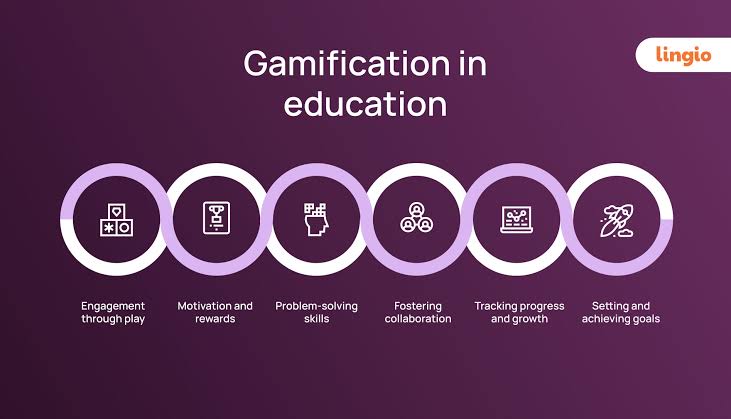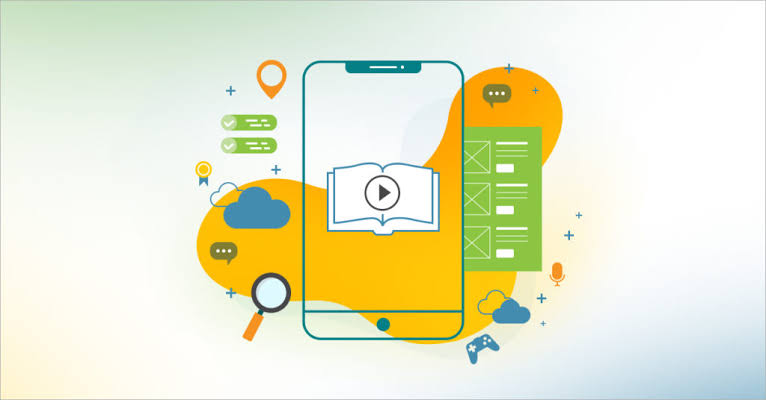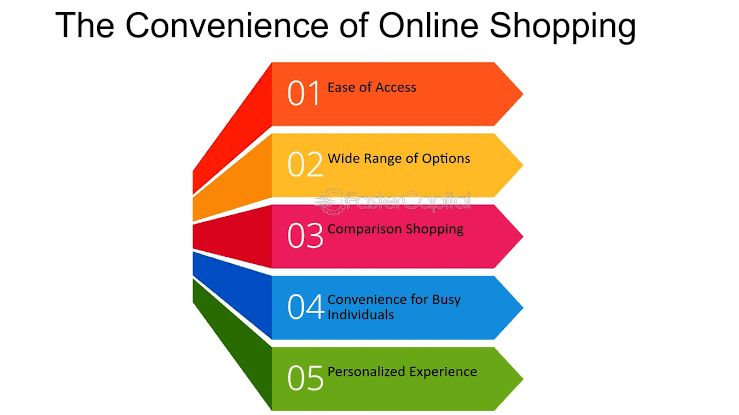
Gamification of Education: Making Learning Fun
Gamification in education uses game mechanics to transform traditional learning into a fun, engaging, and motivating process. By integrating elements like points, badges, challenges, and immediate feedback, it enhances student participation, caters to diverse learning styles, and promotes collaboration. When thoughtfully applied, gamification boosts motivation and improves knowledge retention, making education more interactive and effective while balancing entertainment with meaningful learning
✨ Raghav Jain

Introduction
Education is evolving fast, and traditional methods are no longer enough to keep students motivated. With distractions everywhere, many learners find it hard to stay focused or enjoy studying. Enter gamification—the exciting strategy of applying game design elements in education to make learning more engaging, interactive, and fun.
Gamification transforms dull lessons into captivating experiences, encouraging participation, creativity, and mastery through rewards, challenges, and competition. When done right, it not only makes learning enjoyable but also improves retention, critical thinking, and problem-solving skills.
In this article, we’ll explore what gamification is, why it works, its benefits, examples, and how educators, parents, and students can apply it daily for effective learning. Gamification is a transformative pedagogical approach that is redefining education by integrating game-like elements into learning environments. This strategy, which is much more than simply playing games in the classroom, leverages the powerful psychological motivators found in games to make the learning process more engaging, interactive, and, ultimately, fun. It's a direct response to the challenges of traditional, lecture-based education, which can often lead to student disengagement and a lack of motivation. By applying concepts such as points, badges, leaderboards, and narratives, gamification turns passive learning into an active and purposeful pursuit.
The core principles of gamification are designed to tap into both intrinsic and extrinsic motivations. Extrinsic motivation comes from the external rewards that gamified systems offer. For example, earning points for correctly answering a quiz or receiving a badge for mastering a new concept provides immediate, tangible recognition of a student's effort. Leaderboards can also foster a sense of healthy competition, encouraging students to push themselves to improve their performance. Studies have shown that this kind of challenge-based gamification can significantly boost student performance and homework completion rates.
However, the real power of gamification lies in its ability to cultivate intrinsic motivation, which is the internal drive to learn for the sake of learning. By framing learning as a quest or a journey, it creates a compelling narrative that sparks curiosity and gives students a clear sense of purpose. Progress bars that visualize how close a student is to mastering a topic or unlocking a new level provide a sense of accomplishment and encourage them to continue pushing forward. This continuous feedback loop builds confidence and self-efficacy, replacing the fear of failure with a low-stakes environment where mistakes are seen as a necessary part of the learning process.
Beyond these fundamental mechanics, a well-designed gamified learning experience offers several key benefits:
Increased Engagement and Retention: Gamification transforms learning from a passive activity into an interactive one. Students who are actively engaged in problem-solving and critical thinking are more likely to retain information. Research has shown that a gamified approach can lead to significant improvements in memory and recall.
Personalized Learning: Many EdTech platforms that utilize gamification are adaptive, meaning they can tailor the learning path to a student's individual pace and skill level. This personalized approach addresses learning gaps in real-time, ensuring that each student receives the specific support they need to succeed.
Fostering Collaboration and Social Skills: While leaderboards can create competition, many gamified systems also encourage teamwork through team-based challenges and shared goals. This promotes collaboration, communication, and problem-solving skills, which are essential for success in both academic and professional settings.
While the benefits are substantial, the effectiveness of gamification depends on careful implementation. Critics point out that an overemphasis on extrinsic rewards can sometimes diminish intrinsic motivation, and that gamification may not be suitable for all subjects, especially those that require in-depth theoretical understanding. The key for educators is to design a system where game elements are meaningfully integrated with learning objectives, ensuring that the focus remains on education and not just on earning points. By balancing competition with collaboration and using rewards to reinforce, rather than replace, the joy of learning, gamification has the potential to transform the educational experience and empower a new generation of motivated, lifelong learners.
What is Gamification in Education?
Gamification means incorporating game-like features into non-game contexts. In education, it involves using elements such as:
- Points and scoring systems
- Leaderboards and badges
- Levels and challenges
- Quests or missions
- Instant feedback
- Rewards and incentives
The goal? To motivate learners by tapping into natural human desires for achievement, competition, and social connection. Instead of passive learning, students become active participants in their education.
Why Gamification Works: The Science Behind It
- Motivation Through Rewards
- Games provide clear goals and rewards, releasing dopamine—a feel-good brain chemical—that boosts motivation and focus.
- Instant Feedback
- Gamified learning gives immediate responses, helping learners quickly understand mistakes and improve.
- Social Interaction
- Leaderboards and team challenges encourage healthy competition and collaboration, which enhance learning through peer influence.
- Personalized Pace and Mastery
- Levels allow students to progress at their own speed, ensuring better comprehension and confidence.
- Increased Engagement
- Fun challenges capture attention and reduce boredom, improving memory retention.
Benefits of Gamification in Education
- Improves Learning Outcomes
- Active participation leads to better understanding and long-term retention.
- Builds Problem-Solving Skills
- Games often require strategy and critical thinking.
- Encourages Persistence
- Students keep trying until they succeed, learning resilience.
- Enhances Collaboration
- Team-based challenges foster communication and teamwork.
- Caters to Different Learning Styles
- Visual, auditory, and kinesthetic learners all benefit from interactive game elements.
- Boosts Confidence
- Progress tracking and rewards give students a sense of achievement.
Examples of Gamification in Education
1. Point and Badge Systems
Students earn points or badges for completing tasks, encouraging participation and goal-setting.
2. Quests and Missions
Teachers design lessons as missions where students solve problems or answer questions to advance.
3. Leaderboard Competitions
Healthy competition through leaderboards motivates students to improve.
4. Game-Based Learning Platforms
Tools like Kahoot!, Quizizz, and Duolingo use quizzes and games to teach subjects interactively.
5. Classroom Role-Playing Games
Students assume roles to explore topics, fostering creativity and deeper understanding.
How to Apply Gamification Daily: Tips for Educators and Parents
For Educators:
- Design lessons with clear goals and rewards
- Use digital tools and apps with gamified quizzes
- Break lessons into levels and allow self-paced learning
- Encourage group challenges and peer feedback
- Give instant feedback to keep students engaged
For Parents:
- Use educational games and apps at home
- Set small learning goals with rewards (stickers, screen time)
- Turn homework into fun challenges or quests
- Celebrate progress, not just grades
- Engage with children by playing educational games together
Daily Gamified Learning Routine
Morning
- Quick quiz on previous day’s topic using apps like Kahoot!
- Set daily “mission” or learning goal
Afternoon
- Participate in group challenges or discussions
- Use flashcards with point systems
Evening
- Review progress with parents or peers
- Play educational games related to current lessons
Weekly Gamification Practices
✅ Create new challenges or levels weekly
✅ Reward consistent participation with badges or privileges
✅ Encourage students to design their own quizzes or games
✅ Host friendly competitions with prizes
✅ Reflect on progress and set new learning “quests”
Common Challenges and How to Overcome Them
Challenge: Some students may feel discouraged if they fall behind on leaderboards
Solution: Focus on personal progress and give rewards for effort, not just rank
Challenge: Overemphasis on competition can reduce collaboration
Solution: Balance individual and team activities to foster cooperation
Challenge: Teachers overwhelmed by tech tools
Solution: Start small with simple apps or manual point systems before scaling up
Myths About Gamification in Education: Busted!
“Gamification means just playing video games.”
→ False! It’s about using game design principles, not just games.
“It’s only for young children.”
→ Wrong! Gamification works for all ages, from primary school to university.
“Gamification makes learning less serious.”
→ Not true. It enhances seriousness by increasing focus and effort.
“It’s a distraction, not a learning tool.”
→ On the contrary, it promotes active learning and retention.
Conclusion
Gamification is transforming education by making learning an exciting adventure rather than a chore. By turning lessons into games filled with challenges, rewards, and collaboration, it taps into students’ natural motivation and creativity.
Whether you are a teacher, parent, or learner, embracing gamification can boost engagement, deepen understanding, and make the whole learning process more joyful. Small daily steps like using quizzes, setting goals, and rewarding effort can lead to big improvements in learning outcomes.
So, start adding a little fun to your education journey—because when learning feels like play, success naturally follows.
Q&A Section
Q1:- What is gamification in education?
Ans :- Gamification is the use of game design elements and principles in non-game contexts like education to increase engagement, motivation, and enjoyment in learning.
Q2:- How does gamification make learning more fun?
Ans :- By incorporating challenges, rewards, leaderboards, and interactive storytelling, gamification turns learning into an enjoyable experience that encourages active participation.
Q3:- What are common gamification elements used in educational settings?
Ans :- Points, badges, levels, progress bars, challenges, feedback, and competition are widely used to motivate students and track their achievements.
Q4:- How does gamification improve student motivation and engagement?
Ans :- It taps into intrinsic and extrinsic motivators, making students feel rewarded and recognized, which encourages them to persist and stay focused.
Q5:- Can gamification help different types of learners?
Ans :- Yes, gamification offers varied activities and feedback styles, catering to visual, auditory, and kinesthetic learners while supporting personalized learning paces.
Q6:- What role does immediate feedback play in gamified education?
Ans :- Instant feedback helps learners understand mistakes and successes quickly, enhancing their learning process and keeping them motivated.
Q7:- Are there any risks or challenges associated with gamification in education?
Ans :- Overemphasis on rewards can reduce intrinsic motivation, and poorly designed games might distract from learning objectives if not aligned properly.
Q8:- How can teachers effectively implement gamification in their classrooms?
Ans :- By integrating game elements that align with curriculum goals, setting clear rules, encouraging collaboration, and using technology thoughtfully.
Q9:- What impact does gamification have on student collaboration and social skills?
Ans :- Many gamified activities promote teamwork, communication, and problem-solving, fostering social interaction and peer learning.
Q10:- How is technology enhancing gamification in modern education?
Ans :- Digital platforms, apps, and virtual/augmented reality provide immersive gamified experiences that are accessible, scalable, and customizable.
Similar Articles
Find more relatable content in similar Articles

The Rise of Green Tech: Innova..
Green technology is revolutio.. Read More

From Classroom to Career: App..
Skill-building apps help stud.. Read More

E-Commerce and the Convenience..
E-commerce has revolutionized .. Read More

Tech vs Nature: Can They Coexi..
The debate of "Tech vs Nature".. Read More
Explore Other Categories
Explore many different categories of articles ranging from Gadgets to Security
Smart Devices, Gear & Innovations
Discover in-depth reviews, hands-on experiences, and expert insights on the newest gadgets—from smartphones to smartwatches, headphones, wearables, and everything in between. Stay ahead with the latest in tech gear
Apps That Power Your World
Explore essential mobile and desktop applications across all platforms. From productivity boosters to creative tools, we cover updates, recommendations, and how-tos to make your digital life easier and more efficient.
Tomorrow's Technology, Today's Insights
Dive into the world of emerging technologies, AI breakthroughs, space tech, robotics, and innovations shaping the future. Stay informed on what's next in the evolution of science and technology.
Protecting You in a Digital Age
Learn how to secure your data, protect your privacy, and understand the latest in online threats. We break down complex cybersecurity topics into practical advice for everyday users and professionals alike.
© 2025 Copyrights by rTechnology. All Rights Reserved.